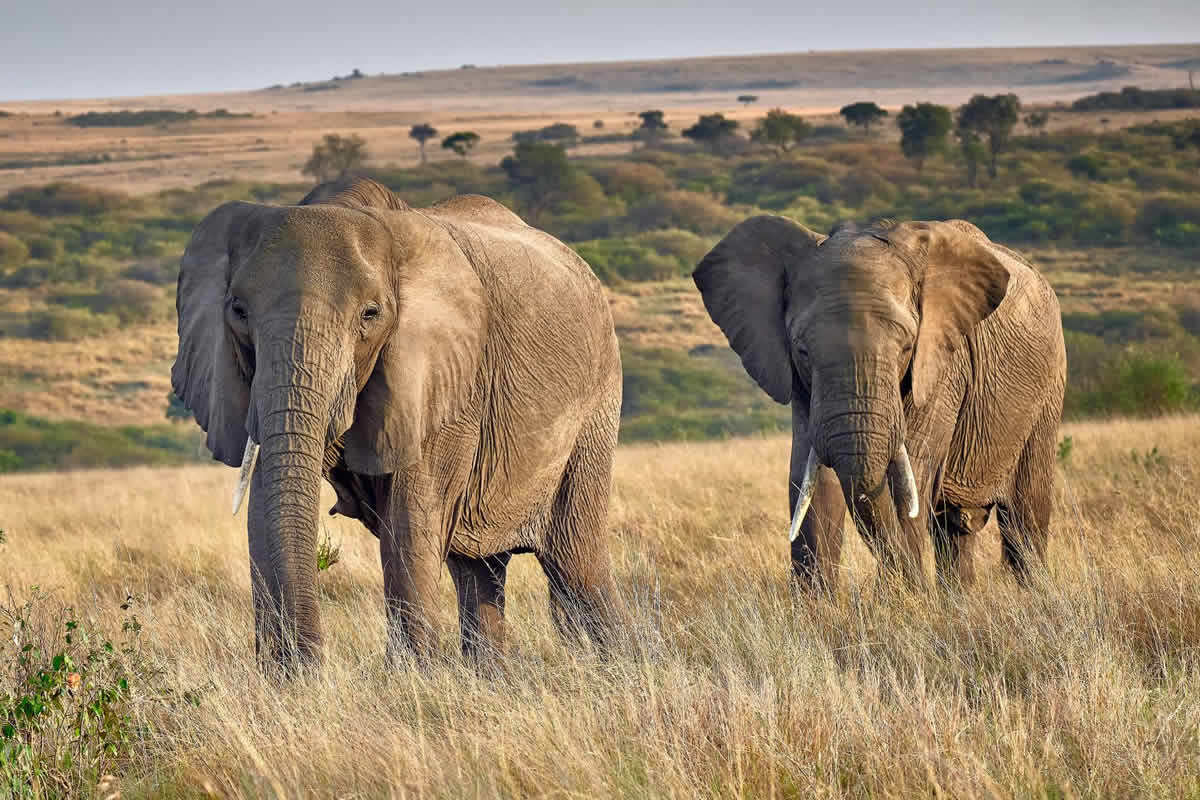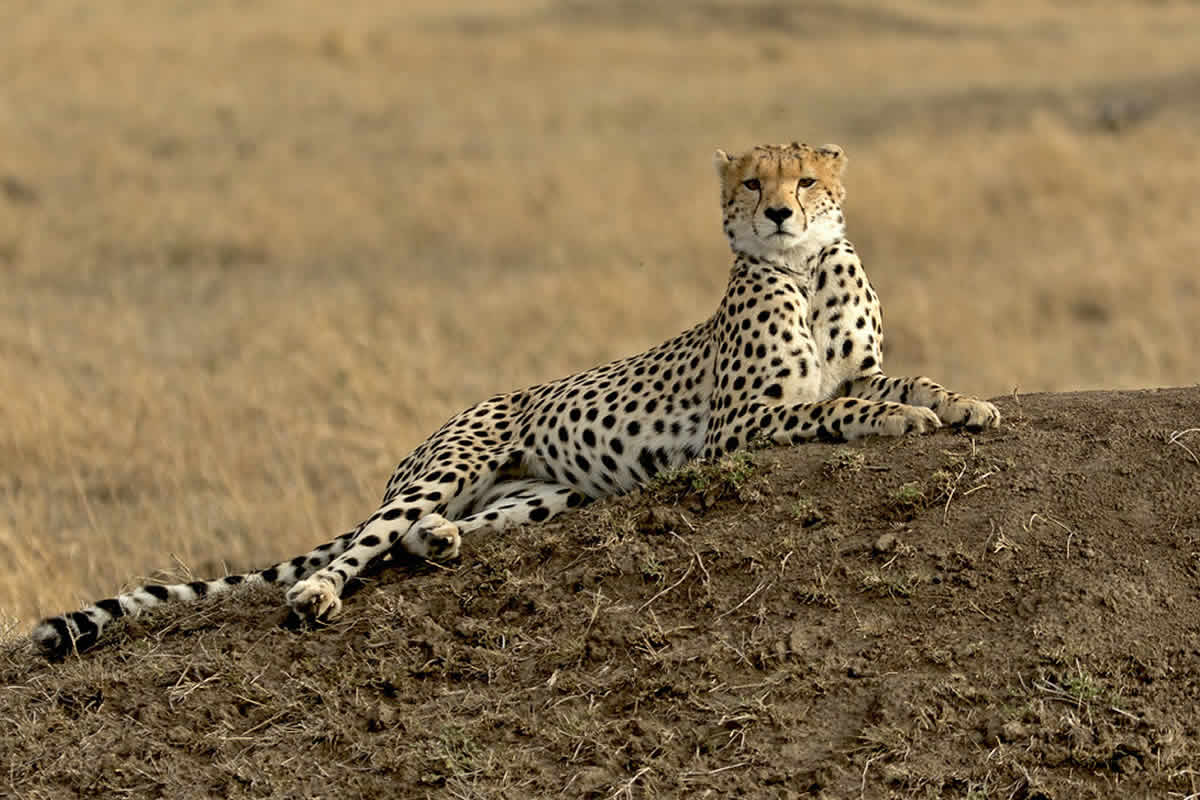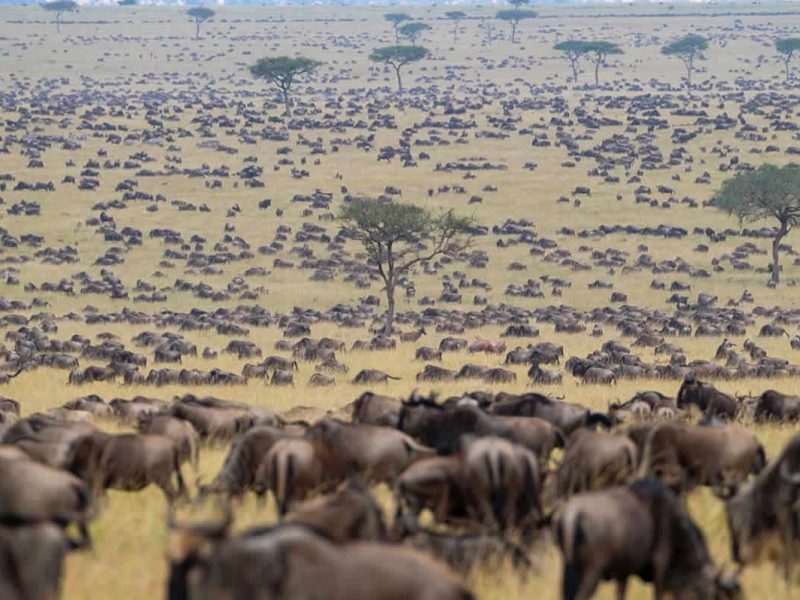






Rolling hills, sprawling savannahs, dramatic river crossings and of course… more wildlife and adventure than any movie could ever portray. Welcome to the Masai Mara, home to the lions of ‘Big Cat Diary’, temporary residence of the ‘Great Migration’, mighty Maasai warriors and some of the most luxurious safari lodges on earth.
The Masai Mara features a stunning kaleidoscope of wild and rugged landscapes, warm and welcoming people and an exciting array of creatures – big and small. World famous for hosting the epic Great Migration, the Masai Mara welcomes 1,5 million wildebeests onto its sprawling savannahs each July through October. The Masai Mara National Reserve and conservancies are brimming with life and offer safari travellers a wide variety of activities to choose from. Whether you take to the skies for a high-flying hot-air balloon adventure at sunrise or hit the road for a 4×4 safari, you’re sure to leave the Masai Mara with unforgettable experiences and lifelong memories.
Masai Mara ecosystem contains some 25% of what is left of Kenyan wildlife. The estimate says that around 70% of Kenya’s wildlife lives outside national parks and reserves. Thus; the need for new role models preserving the Mara wildlife, on private land is paramount. Naboisho plays that role today! Africa has lost some 95-98% of its most iconic mammals over the last hundred year or so, elephants, rhinos, lions, and cheetah. WWF estimate that the world will lose 2/3 of its vertebras in the incredibly short period 1970-2020, ie 50 years. Some 70% of the world’s ecosystem is under stress. Loss of habitat is the main reason for this decimation.
The Maasai Mara lies in the Great Rift Valley, which is a fault line some 3,500 miles (5,600km) long stretching from Ethiopia’s Red Sea through Kenya, Tanzania, Malawi, and into Mozambique. Here the valley is wide, and a towering escarpment can be seen in the hazy distance. The animals are at liberty to move outside the park into huge areas known as ‘dispersal areas’. There can be as much wildlife roaming outside the park as inside. Many Maasai villages are located in the ‘dispersal areas’ and they have, over centuries, developed a synergetic relationship with the wildlife.
There are four main types of terrain in the Mara – the Ngama Hills to the east with sandy soil and leafy bushes favoured by black rhino; Oloololo Escarpment forming the western boundary and rising to a magnificent plateau; Mara Triangle bordering the Mara River with lush grassland and acacia woodlands supporting masses of game, especially migrating wildebeest; and the Central Plains, forming the largest part of the reserve with scattered bushes and boulders on rolling grasslands favoured by the plains game
The Mara is perhaps best known for the Great Migration, which takes place every year July to September. During these months the yellow savannah is dotted black by more than 1.5 million wildebeest, zebra and antelopes that migrate from the Serengeti to the Mara in search of food and water.
Mara and Serengeti parks are interdependent wildlife havens. This is where the world’s largest multi-species migration takes place. The movement is, centered around the wildebeest migrating from Serengeti into Masai Mara during the dry period in Tanzania, crossing the mighty Mara River on their way. The Great Wildebeest Migration rightfully deserves its standing as one of the natural world’s most astonishing spectacles. Compromising of more than 1.5 million wildebeest, zebras and antelopes, the Great Migration constitutes the last surviving multi-species migration on the planet.

From the end of July onwards, millions of freshly arrived brown and black dots scatter the great plains of the Masai Mara National Reserve, making this Natural Wonder of the World even more wondrous until they wander back in December. The life cycle of the wildebeest is a snapshot of the circle of life of all living creatures. The wildebeest spend their lives wandering, unwearyingly trekking between the Serengeti in the South to the Masai Mara in the North.
Every sequence in a wildebeest’s life happens in accordance with Mother Earth. Their migratory routes are determined by the rain patterns; they wander in constant pursuit of water and fresh grass. Similarly, their calving instincts are timed to the movements of the moon, resulting in a three-week-long birth fest on the Serengeti plains in February.
Not sure where to start planning your dream safari? Get ideas for free now
